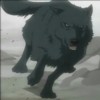Medal of Honor (Xbox 360) review"I wonít pretend that Iíll not sink hours and hours of my time into online play, but it doesnít stop the title from being only half of what it should be. Iím not about to ignore that." |
The (now well documented) problem with the new Medal of Honorís direction is that it misspells honour it really wants to be Infinity Wardís version of Call of Duty but doesnít have as much practise at it yet. As such, EAís first attempt at knocking off the top dog is less a mortar shell to the head and more a slight nudging with a bayonet. To an unimportant part of the leg -- like the calf.
As such, the series steers itself away from structured missions against Nazis and instead turns its sights towards the Taliban, featuring a staggering four or five enemy character models to represent the entire terrorist movement and giving them slightly differing headscarves. This campaign mode is short, unmemorable and serves very little purpose but to showcase Medalís creative bankruptcy: more or less anything you see here has been done before and done better by the game it tries so hard to ape. Remember that time when you were hurtling down a snowy hill on ski mobiles, snaking in and out of trees while snipers took potshots and enemies on similar vehicles swarmed to your flank? This has something very similar, only itís on an ATV quad bike. And thereís no obstacles. Or snipers. Or enemies at all. At one point thereís a sheer drop that pales mightily in comparison to the live-or-die leap over an icy crevice Modern Warfare showed off. Itís impossible to crash or die at, but you are awarded with an achievement for it.
Itís a real problem because moments that were obviously meant to stand out often fall flat. Taking control of a helicopter gunship (like you do in Modern Warfare) has you clicking on white framed boxes to launch guided missiles rather than provide a static-breaking slice of rail shooting. Slogging your way slowly towards armoured gun embankments is pure trial and error as you try and plot out routes that keep you under the best cover, fail spectacularly, then respawn at the checkpoint and try a slightly different way. Levels that do make a stab at validity often have drawbacks of their own. Hiding away in a rocky outcrop of a mountain range allows you to break out a long distance sniper rifle and take shots at the personnel situated in the far distance. Thereís a clever delay between pulling the trigger and hitting your mark that keeps in check with the distances in play, and youíll have to hunt down enemy snipers by the sun glinting off the scopes before they get a lock on you via similar means. But itís hardly a new idea, and itís a stage that finishes before it ever really gets started. Another level has you and your group of four hole up in a stone hut while what feels like the entire Taliban army is bearing down on you. The hut is far from indestructible, and, as the firefight rages on, what used to be solid cover is slowly worn away by the sheer number of opposing force until all thatís left is waist-high walls and crumbled rock. But this set piece drags on and on, making it feel less like a frantic last stand against immeasurably stacked odds and more like a chore.
Itís more than a little disappointing that after all the hype and the advertising, this brave new title is no more than a pale imitation of one already established. It could end here on an unfavourable note, but the more time spent with the game highlights something distressing. The single player campaign is little more than an afterthought, something thrown in out of obligation rather than craftsmanship. Things very much could -- and should -- have been better, and nothing spells this out quite so clearly as how functional the game is as soon as you take things online.
Online, Medal of Honor is fantastic. Sure, it still shamelessly borrows heavily from Modern Warfare in how progressing through various ranks of solider unlocks bigger and badder weaponry, but it does more or less everything right. Games are all squad based as you team up with either the Allied Forces or the Taliban the evil OPFOR to take on a series of objectives. These games range from the basic team death matches to combat missions which require you attack or defend set locations.
The three upgradeable classes play a big role in what you do. Special ops favour close range combat, snipers take long range and riflemen exist somewhere in the middle. Because of the size of each team, itís a guarantee that all three classes will be found in heavy abundance. This means, while itís all well and good equipping your newly-unlocked shotgun and running full tilt into battle, odds are, a sniper burrowed away up high will blow your head off if you do little more than charge recklessly. Of course, this will mean betraying his position, and youíll have your own vanguard of snipers sitting behind you. This long-range covering fire is, in itself, extremely helpful, but hanging back and waiting for people to stray into your scopes isnít going to fulfil any objectives. You canít plant explosives or capture waypoints if youíre waiting at the rear all game. It forces you into action.
Some objectives ask you to destroy set locations, where youíll need to fight your way in, plant a charge and then protect it as the fuse runs. On the other hand, you might need to defend these points, keeping transgressors at bay and defusing any explosives planted by soldiers that somehow sneak in through the gaps. Other missions are long slogs where you either need to advance through set waypoints in a set amount of time, or halt enemy progression long enough until the timer runs out. In one of these, a spare airfield littered with the carcases of decommissioned planes, to win, youíll need to destroy a roadblock, blow some heavy hanger doors, forcibly take the belly of the airfield, then destroy two communication hubs, all while under constant fire and with the clock always ticking.
That players can fall in and out of live matches is a huge boon to proceedings; it not only cuts waiting time for an active match in half, it means that opposing teams are never massively unbalanced through no fault of their own. Player killers are punished by deductions in their points which means their level up progression is severally hampered and, win or lose, thereís always a satisfying amount of personal gain (and the ambiguous ability to blame ultimate loses on the incompetence of faceless team-mates never hurts ego).
Itís obvious to see where the effort has gone in Medal of Honor. One side of the coin is flawless while the other is warped and disfigured, and this puts it at a loss when stacked against the FPS race leaders it aspires to keep pace with. Add to that a gaping void where local multiplayer should be, and youíll find a title of relatively little value should you be one of those odd people with an offline 360. Iím not one of those people, so wonít pretend that Iíll not sink hours and hours of my time into online play, but it doesnít stop the title from being only half of what it should be. Iím not about to ignore that.
 |  |  |  |  |
Staff review by Gary Hartley (November 10, 2010)
Gary Hartley arbitrarily arrives, leaves a review for a game no one has heard of, then retreats to his 17th century castle in rural England to feed whatever lives in the moat and complain about you. |
|
More Reviews by Gary Hartley [+]
|
|
If you enjoyed this Medal of Honor review, you're encouraged to discuss it with the author and with other members of the site's community. If you don't already have an HonestGamers account, you can sign up for one in a snap. Thank you for reading!
User Help | Contact | Ethics | Sponsor Guide | Links











